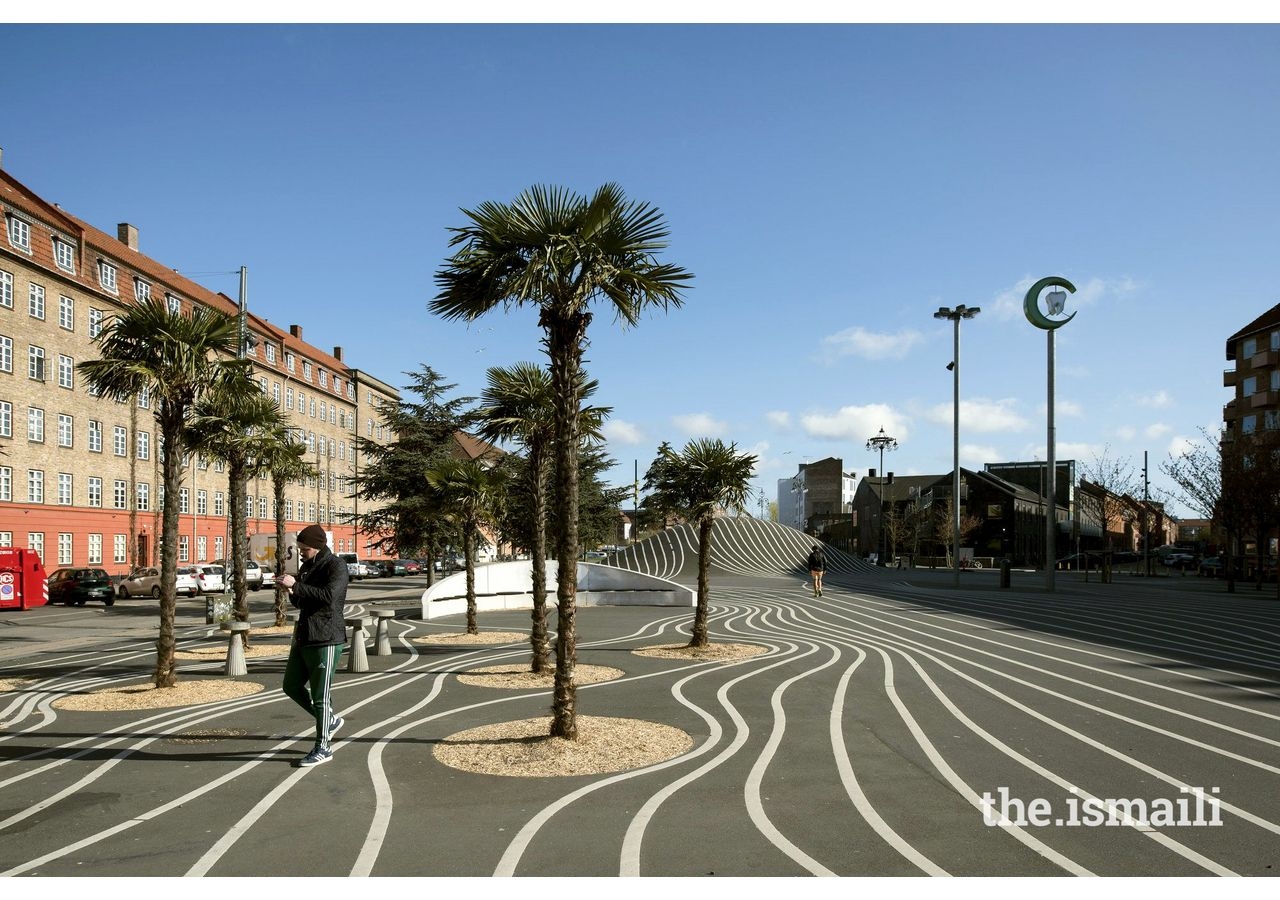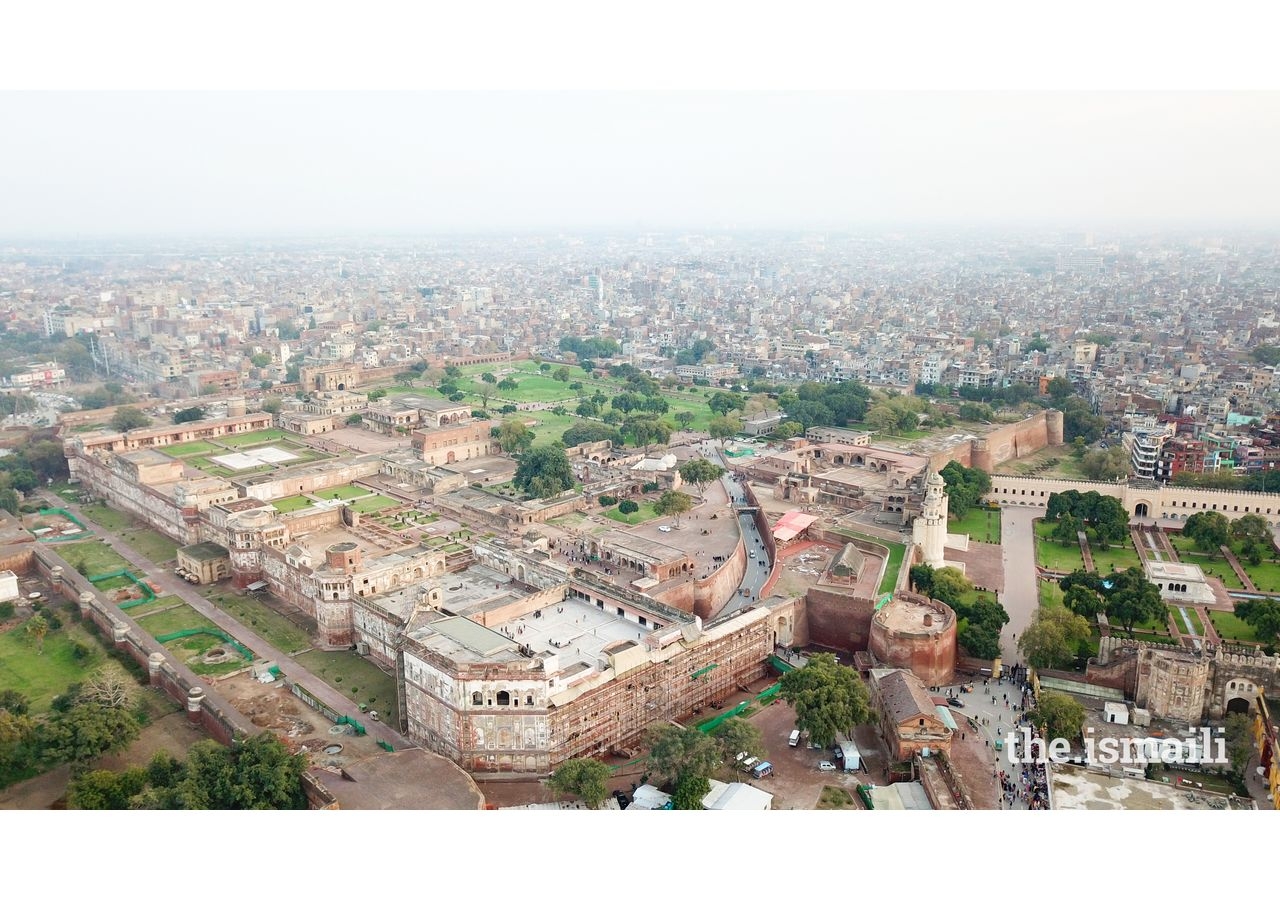We don’t often think about it, but architecture is everywhere. The philosopher and author Alain de Botton has said, “In an odd but quietly very important way, works of architecture ‘speak’ to us. Some buildings, streets and even whole cities seem to speak of chaos, aggression or military pride; others seem to be whispering to us of calm or graceful dignity, generosity or gentleness.”
"In a profession crowded with prizes, the Aga Khan Award for Architecture remains one of the world’s most significant and influential honors." Architectural Record, August 2019
Architecture Redefined
It was this tension between traditional design and the impetus to modernize, hence westernize, in the Muslim world, that concerned Mawlana Hazar Imam when he wanted to build his own institutions. It was also evident that the great architectural monuments and historic sites had been neglected and were deteriorating, a sad reflection of their past significance and symbolism.
In 1976, Mawlana Hazar Imam told the National Council of Culture and Arts in Pakistan, that Muslim cultures had "suffered the insidious influence of alien cultures," and that he feared the day when "Islam will be our faith, yet its outward manifestation in the building we work and live in, the painting and works of art we behold and the music we listen to, will be dominated by foreign cultures which have their roots neither in our spiritual beliefs nor in our great artistic heritage."
In response to his concerns, Hazar Imam established the Aga Khan Award for Architecture (AKAA) in 1977, with the purpose of renewing the rich and diverse traditions of Islamic architecture. The Award seeks to identify and encourage building concepts that successfully address the needs and aspirations of communities in which Muslims have a significant presence.
Continuing his quest to rejuvenate and recapture the cultural traditions of the Islamic world, Hazar Imam said in Cairo in 1989: "What the Muslim world needs today, is more of those innovative architects that can navigate between the twin dangers of slavishly copying the architecture of the past and of foolishly ignoring its rich legacy." The McDonaldization of much of contemporary buildings in Muslim countries was certainly a travesty, and indigestible to many who were familiar with, and who appreciated the history and legacy of their architecture.
When development is viewed "only through the lens of an economic or materialistic conception, we seriously devalue and impoverish the idea," says Dr. Azim Nanji, and that the quality of life of societies and peoples also encompasses their cultural and social lives, cornerstones of their identities. "Architecture is one significant manifestation of that sense of belonging and place," he says, and reflects or affects how their daily lives are organized around spaces within which the people interact with others. "It is through architecture that they identify markers of their past and present. In a broader sense it is as part of a total environment that they can explore their sense of being in the world," he adds.
While extravagant, iconic buildings, and their architects are the most celebrated, the AKAA, established in 1977, is more concerned with recognizing projects that make a statement through their use of materials and technology, that reflect a culture's traditions and history, and that impact the community's quality of life in an economic and practical manner. Modernization (Petronas Office Towers, Malaysia, 2004), industrialization (Ipeykol Textile Factory, Turkey, 2010), urbanization (Kampung Improvement Programme, Indonesia, 1980), housing (Dar Lamane Housing project, Morocco, 1986), sanitation (Indore City Slum Networking project, India,1998), education (Bridge School, China 2010), healthcare (Kaedi Regional Hospital, Mauritania 1995), public spaces (Tabiat Pedestrian Bridge, Iran,2016), and the environment (Wadi Hanifa Wetlands, Saudi Arabia, 2010), have all factored in the selection process, not merely the artistic merits or innovation in the design features of a project.
Scale or complexity is not of major significance in the selection of the winners, and is at odds with historian Sir Nikolaus Pevsner's comment that "A bicycle shed is a building, Lincoln Cathedral is architecture." Indeed, a nondescript two-room school in Gando, Burkina Faso, was a 2004 AKAA winner because it represented the architect's commitment to improve conditions in his village, using materials available locally, which included the whole community's involvement in its construction, and which became a model for other villages impacting children's education and their future. Green spaces are now also considered as part of the architectural landscape (Samir Kassir Square, Beirut, 2007), and even an urban park (Superkilen, Copenhagen, 2016).
Underscoring his own concern for green spaces and how they impact the quality of life, Hazar Imam's gift of Al Azhar Park to Cairo has been named one of the world's 60 best public Spaces, with over a million visitors a year. Sunder Nursery in Delhi, the rehabilitation of the city park in Khorog, and his gift of the Mughal-style Aga Khan Garden in Edmonton to Canada on its 150th anniversary are other examples.
Architecture has another dimension also, as Hazar Imam has said: "Spirituality and architecture, together, become a force that can build bridges between people and communities, and empower them to build a more harmonious and humane future." (Solo, Indonesia 1995). The AKAA seminars and Jury deliberations are opportunities to discuss the objectives of architecture, its symbols, creativity, use, and impact in Muslim cultures.
Now in its 42nd year, with 9000 projects documented and 122 winners announced, AKAA has been recognized for its contributions to the discipline. Wrote Washington Post writer Benjamin Forgey in 1998, "It presents the humanistic face of Islam....It has demonstrable good effects on architectural thinking and practice....in scope, the Aga Khan Award is unrivalled." That same year, Robert Campbell wrote in Architectural Record: "The Aga Khan Award is the wisest prize programme in architecture. It's the most serious, the most thoroughly researched, the most thoughtful."
Maria Bertolucci, in a 1997 Metropolis magazine, went further, writing that AKAA is "exceptional," that it "attempts to reframe the issues, establishing architecture as an integral element of Islamic culture, and fosters a modernity that embraces intellectual and technological progress, but not at the expense of cultural identity, spirituality or the earth. Such a noble vision transcends the bounds of Islam." She added that the AKAA has "[...] opened new worlds of thought and responsibility. The question is whether we in the West will pay heed. Inshallah."
Perhaps this is the same vision that the Imam hoped to realize four decades ago, when he said that AKAA "[...] is intended to encourage an understanding and awareness of the strength and diversity of Muslim cultural traditions which, when combined with an enlightened use of modern technology for contemporary society, will result in buildings appropriate for the Islamic world of tomorrow."
While the jury may still be out on the impact of AKAA on architects and buildings in the Muslim world, and although difficult to determine its practical influence on design, there can be little debate that it has added much intellectual depth to discussions about the built environment, even in countries beyond the Muslim world.
Perhaps one of the most significant areas in which AKAA has had an impact is in "shifting perspectives and thinking about architecture and its relevance to Muslims and their immediate contexts of rapid change," notes Dr. Azim Nanji, "and that beyond mere design there is a role for architecture in promoting environmental and social betterment, and of the continuing role of inherited architectural practices and spaces."
Significantly, Dr. Azim Nanji notes that the restoration of the architectural heritage of Muslims has also begun to receive greater attention, based on the activities of the Award. "Through its identification of architectural excellence and practices, AKAA has also raised awareness of why the built environment remains crucial in the development of Muslim societies and indeed, of all peoples inhabiting a planet at risk," he says. Many Muslim historic sites have been restored by the Aga Khan Trust for Culture, such as the Walled City of Lahore and Humayun's Tomb in Delhi, as a result of public-private partnerships.
The 2019 AKAA nominations and awards will further its mission of playing an instrumental role in redefining architecture as an art and a science for the present, as well as for the future, without negating tradition.
Notes
1. Frank Gehry was a member of the 1992 AKAA Master Jury, member of the AKAA Steering Committee (1993-1995) and recipient of the 1989 Pritzker Prize. Hassan Fathy received the first AKAA Chairman's Award, in 1980. Dr. Azim Nanji was a member of the AKAA Steering Committees, 1999-2001, 2014-2016, and 2017-2019.













